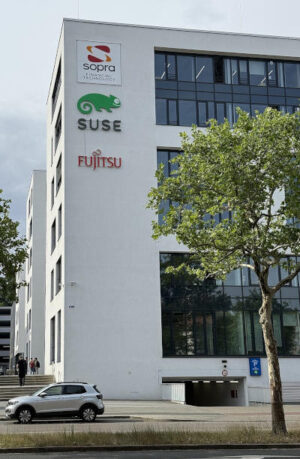Adding reproducible builds should earn near-universal praise, but SUSE’s agentic AI integration with SLES 16 may test some enterprises comfort zones. The good news is that there’s an on/off switch.

In a move that’s sure to cause some to cheer and others to growl, SUSE Linux Enterprise Server 16 — which was released on Wednesday — is the first enterprise Linux distribution to come with agentic AI so integrated that users can authorize it to make root level changes to the operating system level.
The current rush to agentic AI is putting tech developers into a “damned if you do; damned if you don’t” situation when it comes to deciding whether to integrate AI into a project. Reasons to put such plans on hold are many: generative AI is still in its infancy, it’s filled with bugs, and reliability issues include it often getting things completely wrong. However, if you don’t build it into your systems now, you might be giving the competition an opportunity that will later crush you.
The folks at SUSE — evidently deciding they have more to gain than to lose — have become the first to add this technology to a Linux server platform, albeit in a way that lets users completely disable it if they wish. It’s also kinda, sorta not officially there. For the time being they’re calling it a “technical preview,” indicating that it might need some time under its belt before its fully ready for prime time.
It’s also vendor agnostic. Users can connect it to the large language model of their choice.
“Today, every CIO and CTO needs to leverage AI to get more out of existing infrastructure, and this cannot come at the cost of being locked into a single ecosystem,” Rick Spencer, SUSE’s GM of business critical Linux said in a statement. “Using AI with SUSE Linux Enterprise Server 16, IT leaders can drive operational efficiency without having to hire new teams or build a custom toolchain.”
About SLES’s Built-In AI
Actually, what SUSE has done with SLES 16 is offer users a framework for integrating the LLM of their choice through the Model Context Protocol, an open standard that Anthropic released last year for connecting LLMs to tools and data.
The framework is made available by way of SUSE’s Cockpit — the simplified, browser-based web console which replaces YAST as the default configuration management tool for SLES 16 — which enables streamlined, flexible LLM integration using the operating system’s native tools. AI agents can also be controlled through the command line, reducing operational overhead.
And if the notion of having an AI agent running your servers gives you nightmares, not to worry. SLES 16’s AI capabilities are not fully enabled by default and require user intervention to configure and deploy in production environments.
Features Beyond AI
If your trigger isn’t tripped by AI in the copilot’s seat, here’s a sampling of the many other new features in SLES 16:
- Longer Lifecycle: SLES 16 ships with 16 years of support, which not only makes it one of the longest support timeframes in the market, but also the first and only enterprise Linux distribution with a support commitment that makes it post-2038 ready.
- Instant Rollback: Administrators can instantly roll back almost any modification, whether that be a system upgrade, a software patch, or a single configuration edit. You can configure it for your bare metal instances (it’s enabled by default in cloud images) to provides a surgical, OS-level recovery option that is faster and more granular than traditional VM-level snapshots.
- Reproducible Builds: SUSE says that SLES 16 is the first enterprise Linux distribution built with reproducible builds, which means that users can independently verify and rebuild SLES 16 from source while remaining fully supported by SUSE.
- Reduced Skills Gap: SUSE also says that the mainstream components in SLES 16 shrinks the skills necessary for moving from other distributions.
“SUSE is the first to deliver a built-in, open and extensible AI infrastructure directly within an enterprise Operating System,” Spencer said. “This, combined with our historic commitment to security and compliance and an industry leading 16-year lifecycle, makes SUSE Linux Enterprise Server 16 the first enterprise Linux that solves for both immediate innovation and long-term stability.”
Christine Hall has been a journalist since 1971. In 2001, she began writing a weekly consumer computer column and started covering Linux and FOSS in 2002 after making the switch to GNU/Linux. Follow her on Twitter: @BrideOfLinux







AI is gross